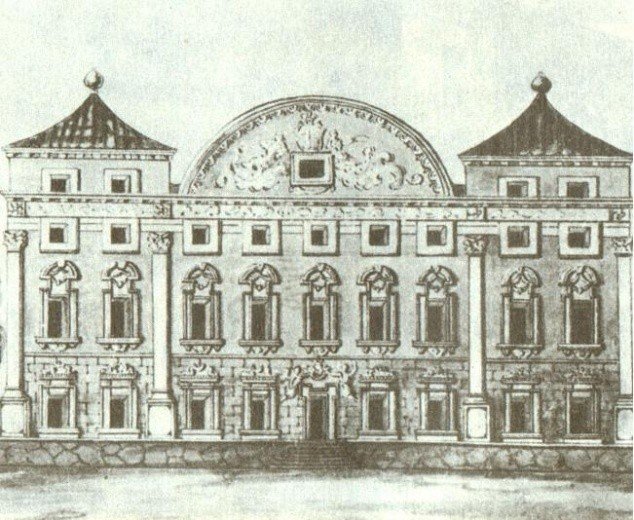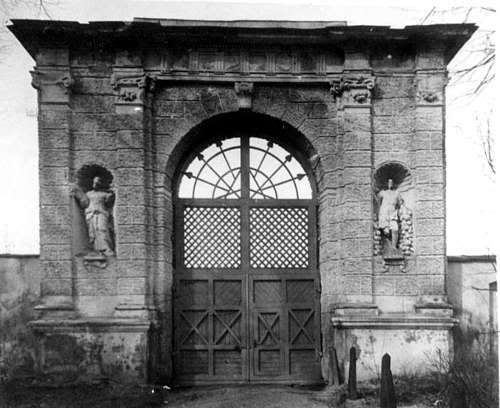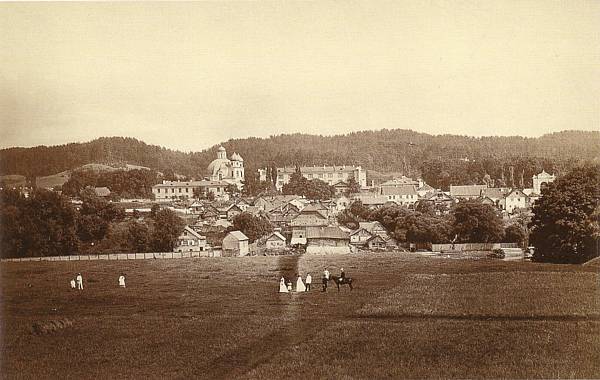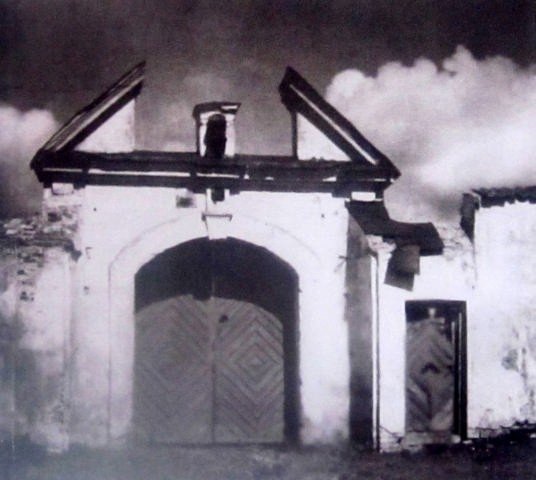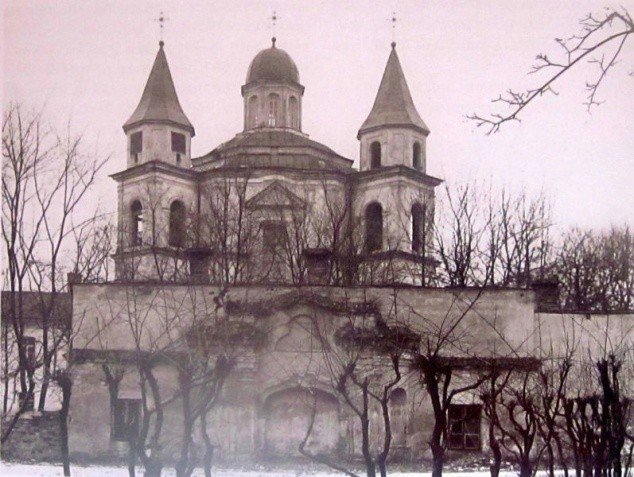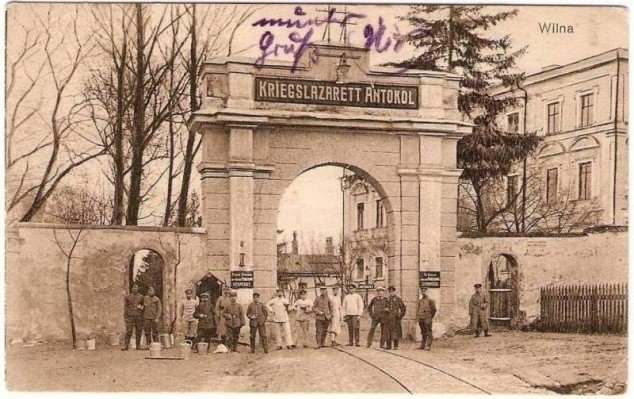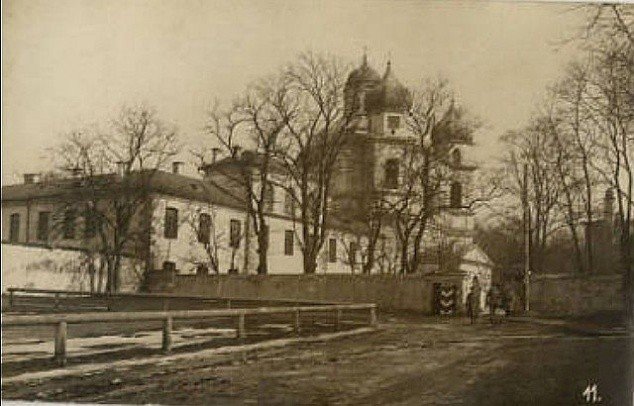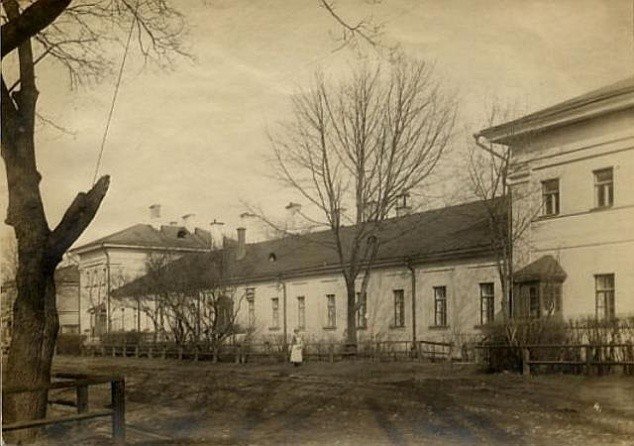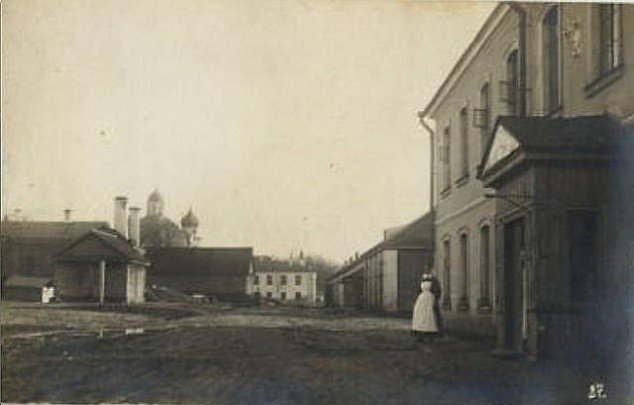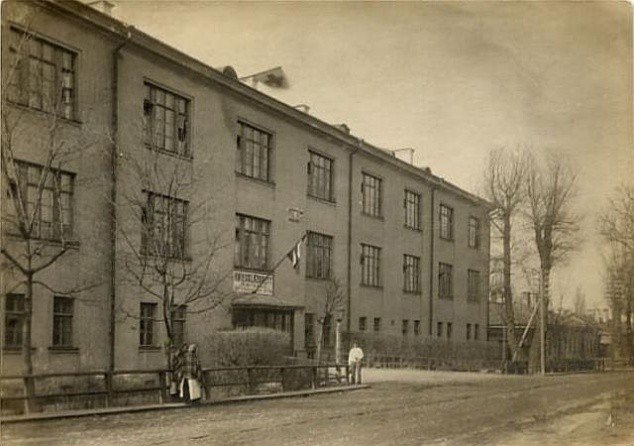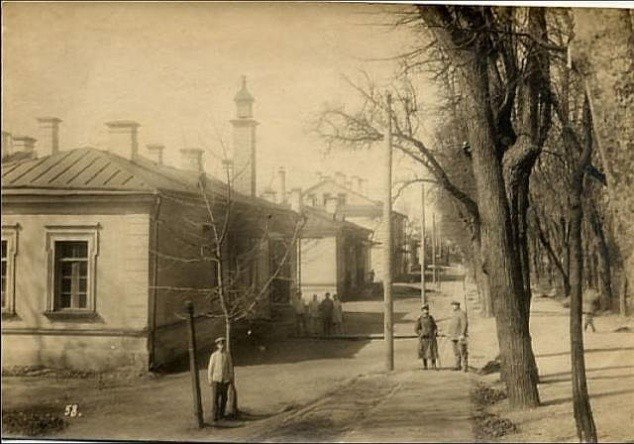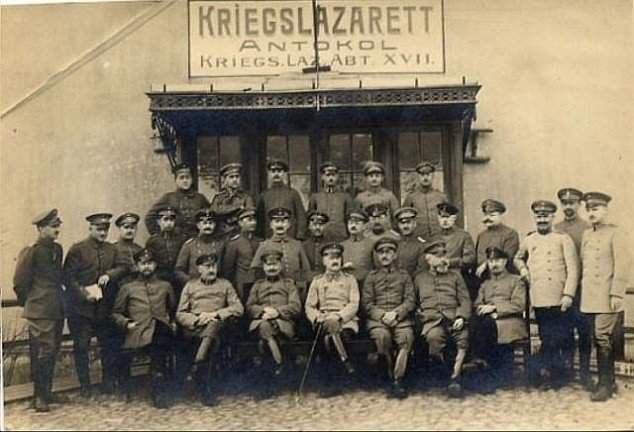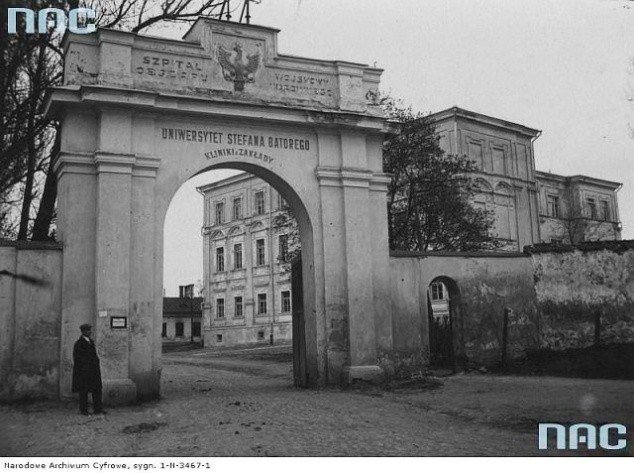The palace was built in 1689-1692 according to the project of Giovanni Battista Fredianis by the Grand Hetman of Lithuania Kazimieras Jonas Sapiega in Vilnius in Antakalni.
It is said that the sculptor and architect of the Sapieha Palace, Giovanni Pietro Perti, and the Italian painter Michelangelo Palonis participated in the decoration.
The only mature baroque (last decade of the XNUMXth century) palace ensemble that has preserved the main contours of the territory and the most important elements of the ensemble composition - the palace courtyard with the palace standing in the center of the courtyard, the central part of the park oriented towards the palace and the central path built on its axis, connecting Antakalnis street with the palace courtyard, at the beginning of the central park alley and at the entrance of the alley to the palace courtyard through the still standing gate. Despite the XNUMXth and XNUMXth centuries. constructions, it is possible to trace in nature the boundaries of the garden, which was between the park and the Trinitoriai Monastery, as well as the transverse park alley directed to the main portal of the Trinitoriai Church, which was built at the same time.
There were two baroque gates in the transverse park alley, the park fence and the wall near the churchyard. The southern gate to the palace courtyard is still standing in the fence of the palace courtyard, on the axis of the current L. Sapiega Street. The northern gate - the gate between the representative courtyard of the palace and the farm yard was demolished around the XNUMXth century. the middle
The most prominent value of the ensemble is the palace with authentic window frames and moldings preserved on the main facade. Vaults have been preserved in the basements and part of the rooms on the first floor. The palace was damaged in 1840. and in 1928 during reconstruction.
1700 after the Battle of Valkininkai, the palace was ravaged by confederate nobles. Buildings were destroyed, paintings in the palace were chopped up. in 1718 The Sapiega complex was temporarily leased to Sofija Bagdzevičiūta Jablonskienei, a confectioner from Mozyriaus. 1720 after the death of the palace builder, the palace was inherited by his youngest son, Grand Marshal of Lithuania Aleksandras Paulius Sapiega, who in 1734 buried in the Church of the Trinitarian Lord Jesus (a monument was erected to him in 1744, which survived until 1865).
Later, the palace was ruled by the son of Aleksander Paulius, the Voivode of Palenque, the elder of Mstislavl, Mykolas Antanas Sapiega.
1760 after the death of Mykolas Antans (who had no heirs), the palace passed to the son of his brother Kazimierz Leon Karolis, the Grand Chancellor of Lithuania Aleksanders Mykolas Sapiega. During his reign in 1763-1765. the French architect Jacob Delau designed the park, the fountain, built a new fence and stairs to the palace and the park.
At the end of the century, the palace was ruled by the son of Aleksander Mykolas, Lithuanian artillery general Pranciškus Sapiega. He in 1797 together with Pelageja Potockyte sold the palace with a plot of land and a forest to Juozaps and Ludvikas Potockyte Kosakauskas.
The main gate from Antakalnis st. Jan Bulhak's photo
1875 years.
The gates of the Sapiegi Palace, photo by Stanisław Filiberto Fleury, 1899
Trinity Church with the churchyard gate, photo by Jan Bulhak. XNUMXth century Ave. This gate was demolished during the Soviet era, when the military settled in the area.
in 1808 July 23 Vaitiekas Puslovskis, the state councilor of the Gardins governorate and the marshal of the Slonim area, sold the Sapiegi palace and half of the jurisprudence to the city of Vilnius for 40 silver rubles. According to A. Rimski-Korsakov, Governor General of Vilnius, Kaunas and Gardin in 000. March 1809 by order, the Military Hospital was opened in the palace.
The palace reconstruction plan was prepared by the architect Jozefs Pusje. In this way, Antakalnis military hospital became one of the first institutions in Lithuania where specially trained doctors worked. Until then, nuns looked after patients in hospitals.
The military hospital was functioning In the Sapiegi Palace, in the Trinitorii Monastery and in the buildings of the Sapiegii Park.
During the war with Napoleon, a French military hospital operated in the Sapiegi Palace, which severely damaged the buildings in a short time.
1854-1855 the hospital had 300-350 beds. At the end of the 700th century, there were already 48 beds here, XNUMX of which were for officers. "The military hospital was headed by a chief (officer), whose duty it is to ensure that the military hospital strictly adheres to the requirements of Russian military medicine, that the medical personnel perform their duties properly, and that the recovered lower-ranking officers do not stay in the hospital unnecessarily..."
With the outbreak of the First World War, the hospital's facilities were urgently expanded. The number of beds increased from 350 to 1700. This was done by connecting the buildings of the current Lithuanian Military Academy to the Military Hospital.
Before the Germans entered Vilnius, most of the patients were taken away.
Military hospital. in 1917
When Poland ruled the region in 1919-1939. Clinics of Stephen Batory University were located in the premises of the military hospital. By the decision of the university administration, the Clinics of Surgery, Internal Medicine, Pediatrics, Ophthalmology and Dermatology, as well as the Departments of Pathological Anatomy, Hygiene, and Stomatology appeared in the buildings.
During the Second World War, the Military Hospital was adapted for the needs of the German army. After the war, it was restored as a Military Hospital. It was established Vilnius University Department of Hospital Surgery.
XNUMXth century In the second half - the XNUMXth century. operated around the Military Hospital:
• Lithuanian Brasta Alexander Cadet Corps (1859-1863). Worked in the Sapiegi Palace (L. Sapiegos st. 13) and Military Hospital (Antakalnios st. 17) buildings;
• Second Engineer Battalion (1873-1914). Worked in the buildings of the Trinitorius Monastery (27 Antakalnio St.) and the current Lithuanian Military Academy (5A Šilo St.);
• Military School (1940). Worked in the Sapiegi Palace, the Military Hospital and the buildings of the current Lithuanian Military Academy;
• Vilnius Infantry School (1940-1941, 1954-1953). Worked in the Sapiegi Palace and in the buildings of the current Lithuanian Military Academy;
• Vilnius Anti-Aircraft Defense Radiotechnics School (1953-1971). Worked in the Sapiegi Palace and in the buildings of the current Lithuanian Military Academy;
• Radioelectronics School of Vilnius Air Defense Commanders (1971-1992). He worked in the Sapiegi Palace and in the buildings of the current Lithuanian Military Academy.
in 1993 the hospital was named after Sapiega.

